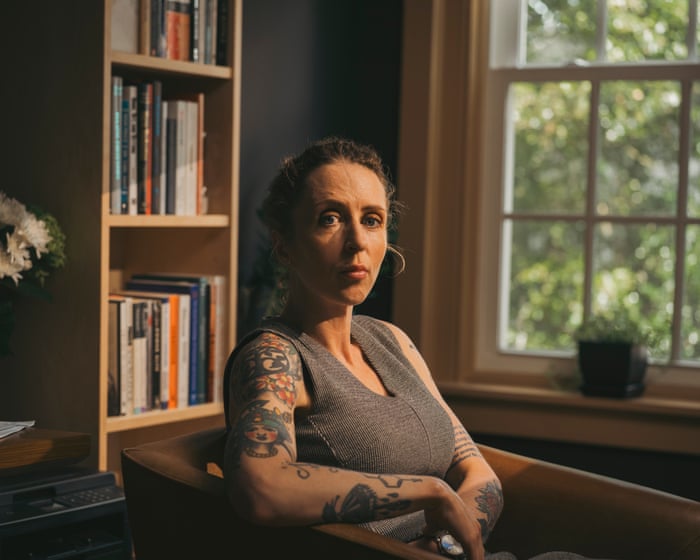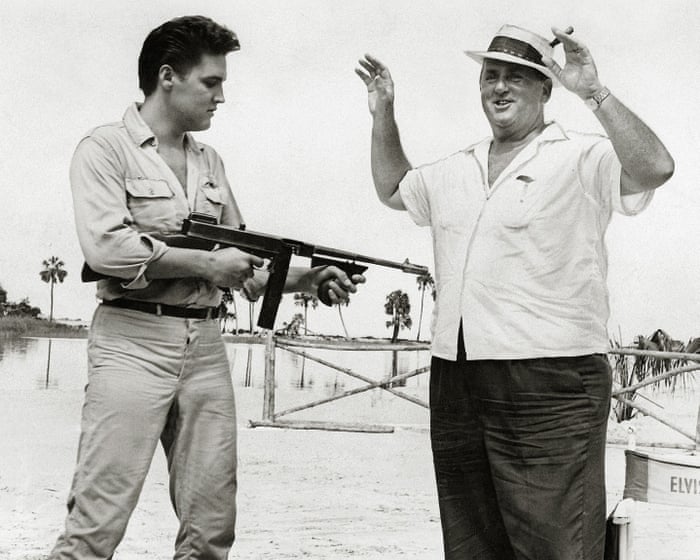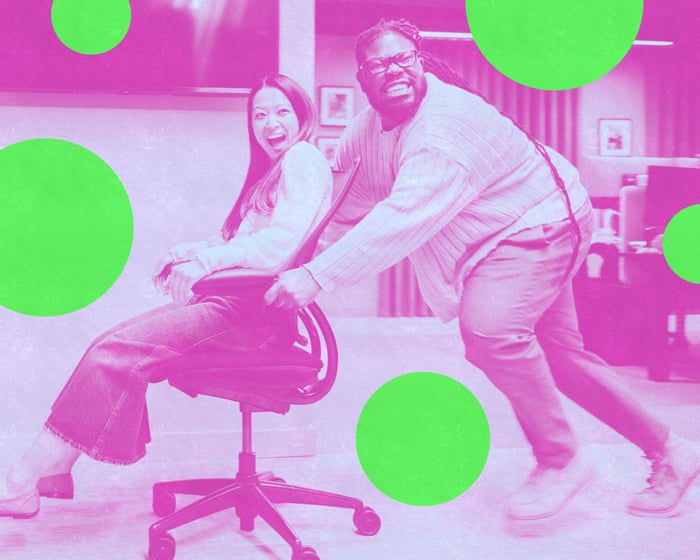At 16, Kirsten Smith was injected with morphine by a boy from school. By 18, she and a date were looking up how to crush and inject oxycodone. At 19, she tried heroin for the first time. Living in Knoxville, Tennessee, she modeled herself after the free-spirited Mia Wallace from Pulp Fiction, spending her days experimenting with alcohol, cannabis, ecstasy, mushrooms, LSD, and benzodiazepines. She read Kurt Vonnegut and the Beat poets, typing out poems on an old typewriter while listening to the Velvet Underground. Like many young Americans in the early 2000s, Smith saw drug use as a harmless part of her lifestyle.
That changed when she ran out of money. After dropping out of high school and using heroin regularly, she was caught stealing credit cards and checkbooks from her boyfriend’s wealthy parents, a family friend at church, and even her grandmother. Placed on probation for two years and forced by her parents into a month-long rehab stay, Smith felt shame for the first time.
Going back to school was meant to be her fresh start. She enrolled in community college and worked as a waiter at Charlie’s, a local restaurant chain. Then, in the summer of 2004, she met Brad Renfro, a former child actor from films like The Client and Sleepers. He introduced her to crack cocaine and the strongest heroin she’d ever tried. After three months together, Smith began to wonder if she’d be a junkie for life.
One day, in Renfro’s downtown boarding house, she watched him struggle to find a vein. Blood ran down his arm as he injected the last of his cocaine supply—a desperate act Smith called a “low sad point in an addict’s life.” To her, Renfro had crossed into a darker level of addiction. Their relationship ended there. (She didn’t hear about him again until he died of an overdose in 2008.)
While working at Charlie’s, Smith met Michael, a quiet young man from her same suburb. With his buzz cut and sharp features, he stood in contrast to his gentle smile and blue eyes. They bonded when Smith mentioned she’d once written a fan letter to Chuck Palahniuk, author of Fight Club, and received a reply. Michael didn’t believe her until she brought the letter to work—dusty and slightly charred from a house fire she’d accidentally started at 15.
In 2005, Smith and Michael rented a one-bedroom apartment in an old downtown building. They used drugs together and shoplifted to support what Smith called their “romanticised junkiedom.” Through their network of suburban users, they became hooked on expensive black tar heroin supplied by a cartel they referred to as “the Mexicans.” Despite their addictions, they maintained a stable home life: writing stories, paying bills, and caring for two cats.
Later that year, both were accepted to the University of Tennessee. Smith saw this as her chance to get sober, but treatment options were limited. Few medications were available for addiction, and when 23-year-old Smith tried to return to rehab, her stepfather’s insurance company turned her down.
They started attending Narcotics Anonymous (NA), a 12-step program that preached total abstinence and strict rules. To Smith and Michael, it felt like they were being told their addiction was a lifelong disease that left them powerless. The disease model, widely used in treatment, emphasizes how addiction can overwhelm a person. But as Smith explained, no one ever asked what she truly wanted. “When I was young and wanted to be a heroin addict, my behavior…”My choices aligned with what I wanted. Was that addiction?
After being accepted to university, Smith kept using heroin. She didn’t see this as a personal failure, but rather as a series of deliberate decisions to balance her drug use with her education. As long as she had access to heroin and the desire to use it, she wasn’t going to quit. Once, she and Michael threw their unused needles down a garbage chute, determined to make a fresh start. But within hours, they were digging through a dumpster to retrieve them.
Smith was fired from her job after being caught nodding off in front of customers, and Michael was later let go as well. Broke and in withdrawal, they lay in bed until sunrise, desperately trying to think of ways to make quick money for heroin. Smith remembered hearing about an unsolved bank robbery near her parents’ house. The bank was a small redbrick building in a perfect spot, right next to the expressway entrance, and it opened at 8 a.m.
While Michael slept, Smith gathered her supplies: an Airsoft gun her stepfather had given her for Christmas, with its bright orange tip painted black; supermarket bags; a scarf to cover her head; and a pair of Jackie O sunglasses.
When she walked up to the teller at the SunTrust bank and pointed the toy gun, she said, “You have 60 seconds to put money in these bags.” After the teller handed over the cash, Smith apologized and said, “Thank you.”
As she sped away in her Volkswagen, a dye pack in one of the bags exploded, staining the money red and filling the car with scarlet smoke. On the expressway, she stopped to tear the duct tape off her license plate before racing home. She stumbled into the apartment and woke Michael. They soaked the bills in the bathtub with water and bleach, salvaging about $11,000—enough for two months of rent, food, and heroin.
The second robbery was more carefully planned. This time, Smith waited in the car while Michael went inside. But someone saw him leaving the bank, and before they could get away, both were arrested.
While under house arrest at her mother and stepfather’s home awaiting trial, Smith wrote letters by hand to Michael, who was also under house arrest just a few blocks away. She told him about the mix of medications she’d been prescribed, including Xanax and Focalin—a stimulant for ADHD that helped her write poetry, a “countdown to prison” journal, and a 450-page novel, all in just one week.
Smith also drank heavily during this time. One night, wearing an ankle monitor, she drove off drunk in her stepfather’s new car. Within two miles, she crashed into a tree and ended up in the emergency room. With blood covering her face and wires holding her teeth together, she looked down and saw she still had her bag with her syringe inside. Her first thought was, “I still have time to buy heroin.”
At Smith’s sentencing hearing in December 2007, her stepfather testified that he hoped she would get the treatment she needed to overcome her struggles. “She is a smart person who has made some mistakes,” he said. “Made them willingly.”
Was Smith a patient in need of the right medication, or a criminal who deserved punishment for knowingly harming others—or both? Before the hearing, in a character letter to Judge Thomas Varlan, Smith took responsibility for her crimes. “I wasn’t abused or molested as a child,” she wrote. “I didn’t grow up on the ‘wrong’ side of town. I wasn’t raised by wolves but by a mother and stepfather who love me and gave me countless opportunities to succeed.”
Smith firmly believed her actions were her own choice from the beginning. Her drug use and crimes weren’t the result of a flawed character or an unchangeable mind, but rather of an environment where heroin was easily available.Her outlook shaped her experiences in prison and beyond, eventually leading her to dedicate her life to challenging mainstream medical models of addiction through her research. Today, she is an assistant professor of psychiatry and behavioral sciences at Johns Hopkins University in Baltimore, Maryland.
Given the non-violent nature of their crimes and their youth, Judge Varlan sentenced Smith to 47 months in custody and Michael to 46 months—the minimum for their charges. Smith’s first stop was Blount County Jail, which she described as a concrete bunker, or “hell.” She went through drug withdrawal without medical help and had to remove the wires in her mouth using a fork.
Locked down 23 hours a day for two weeks with a stranger withdrawing from cocaine, Smith had no access to drugs or the outside world for the first time as an adult. The only reading material in her tiny cell was a pocket-sized copy of the Gospels, left by community volunteers. She read it repeatedly to fall asleep and again when she woke. After nine months, she was transferred to a federal prison in Florida.
In Smith’s telling, no psychiatric diagnosis or personal reflection helped her quit heroin. Only incarceration, forced abstinence, and a return to education made the difference. In prison, she realized that only two things could never be taken from her: her tattoos and her education. After her release at age 27, she worked at a deli that hired former convicts—including Michael, though their romantic relationship had ended. Smith stayed sober, was accepted by the University of Kentucky—which didn’t require disclosure of past charges—excelled in her studies, and went on to graduate school hoping to become an addiction therapist.
While completing her master’s degree in 2015, Smith worked shifts at a rehab facility and met a young man detoxing from opioids. He mentioned drinking a tea from Vietnam called kratom, which eased his anxiety and cravings without making him feel high. Though organizations like the CDC classify kratom as a stimulant, the rehab enforced strict abstinence, and Smith was required to report him. After he was expelled, he stayed in touch, committed to the 12-step program. Two weeks later, he tried heroin and died of an overdose.
In a 2022 essay titled “Disease and Decision,” published in the Journal of Substance Abuse Treatment, Smith wrote about her disillusionment with medical systems that lacked individualized, evidence-based care. This led her to shift her focus to research. She argued that people with substance-use disorders are often discouraged from expressing what they want in recovery. If they try, they’re told they’re selfish, that their character flaws got them into trouble, and that thinking for themselves is dangerous.
For Smith, free will exists on a spectrum, yet many voluntary behaviors are lumped together under “addiction,” as if people with substance-use disorders have permanently lost control. She believes that although her desires, intentions, and choices were limited by factors resulting from prolonged drug use—such as lack of medical care—Despite facing financial struggles, losing access to healthcare, and being locked out of the university system, she insists her actions were always deliberate. For the same reason, she stresses that lifelong cravings and relapses are not unavoidable. Like anyone else, people who use drugs are “complex systems capable of change,” and she believes they should be held accountable for making that change happen.
Smith is slender and pale, with green eyes and dark curly hair. Her arms are covered in tattoos. On her right forearm, marking the spot where she used to inject most often, are the words “Room 101″—a reference to the place in George Orwell’s Nineteen Eighty-Four where Winston Smith betrays his lover to escape his worst fear. When she was in prison, relapsing became Smith’s greatest fear. “That would have been the betrayal,” she told me. “I would have broken my mother’s heart and let down everyone who had loved and believed in me.”
The idea that addiction is a physical disease was first proposed in 1884 by Scottish physician Norman Kerr. In his inaugural speech to the Society for the Study and Cure of Inebriety, he stated that alcohol addiction is “largely the result of certain physical conditions.” He went on to say, “Whatever else it may be, in many cases it is a true disease, as clearly a disease as gout, epilepsy, or insanity.”
For much of the 20th century, however, a different view of addiction dominated popular culture. The “moral model” saw addiction not as a bodily illness but as a failure of willpower. Partly because of this, many countries adopted a punitive approach to drug use, which led to mass imprisonment for substance abuse, especially in the US.
A shift came in 1997, when Alan Leshner, then director of the National Institute on Drug Abuse (NIDA), published an article in the journal Science. He argued that addiction should be seen not as a moral failing but as a chronic, relapsing brain disease. According to Leshner, addiction begins with voluntary drug use but eventually takes over a person’s ability to make decisions, leading to uncontrollable cravings.
When I spoke with Leshner earlier this year, he explained how he aimed to reframe addiction from a criminal issue to a public health problem, treatable with medication rather than incarceration. He was inspired by advances in neuroscience that had changed public perceptions of schizophrenia, leading to more humane treatment of those with the condition. “It became clear to me,” Leshner said, “that the core difference between addicted and non-addicted people was the same as between those with and without schizophrenia—changes in the brain.”
Leshner stands by his 1997 article, in which he acknowledged the role of environmental and socioeconomic factors in persistent drug use but warned that overemphasizing social or spiritual solutions only deepened the stigma attached to drug use. By challenging moralistic attitudes, he also sought to make medications like buprenorphine—a weak opioid with abuse potential—more accessible in medical and prison settings.
Leshner’s approach, known as the brain disease model of addiction (BDMA), became the standard for teaching addiction in medical schools and shaped drug education campaigns. However, this model has faced criticism. Opponents, including Smith, argue that downplaying free will can undermine the belief that full recovery is possible. Smith doesn’t deny that drugs alter the brain—addictive substances do affect reward pathways—but she believes personal responsibility remains essential.It is well established that viewing people with substance-use disorders as “recovering” but never “recovered” does little to improve public understanding of addiction and can destroy any hope they may hold. Smith argues that terms like “chronic” and even “disease” can lead people with substance-use disorders—and those around them—to see relapse as inevitable.
Similarly, Eric Strain, an addiction psychiatrist who mentored Smith at Johns Hopkins University, believes the Brain Disease Model of Addiction (BDMA) oversimplifies our understanding. According to Strain, the BDMA suggests doctors already know what people with substance-use disorders need. “It implies: ‘Just take Suboxone, and everything will get better,'” he explained, referring to a commonly prescribed medication. But reality is often more complicated. “Look at the treatment dropout rates,” he said. “They’re abysmally high.”
The “disease” label has followed Smith throughout her adult life. After earning a PhD studying substance-use treatment for incarcerated women, she completed a four-year research fellowship at NIDA, the center of American addiction research. However, her postdoctoral position came with restrictions: she was not allowed to handle money for research participants or the drugs being tested in labs. Issues of trust and assumptions about her ability to function and avoid relapse persisted.
Smith is part of a new generation of addiction scientists who draw on personal experience to inform their work. They focus on helping people identify environmental factors that lead to drug use and encouraging them to take steps to change those conditions.
In her research at Johns Hopkins, which includes clinical trials and pharmacological studies, Smith interviews people about their experiences self-medicating with unregulated substances like kratom. Rather than asking how the medical system can force people into sobriety, her work explores how individuals have learned to manage their addictions themselves.
Justin Strickland, a behavioral pharmacologist who collaborated with Smith on models emphasizing environmental triggers, noted that supporters and critics of the BDMA actually agree on many points. “We all know addiction is influenced by neurobiology, genetics, and childhood trauma,” he said. “The differences lie in what we emphasize.” As psychiatrist Carl Erik Fisher, who experienced alcohol-use disorder during his medical training, wrote in his recent book The Urge: “It is not that addiction is or is not a brain disease, or a social malady, or a universal response to suffering—it’s all of these things and none of them at the same time, because each perspective adds something but cannot tell the whole story.”
Over the past five years, organizations like NIDA and the NIH have increasingly supported research into psychosocial approaches to addiction, harm reduction, methadone clinics, and community-based services that emphasize continuity of care. Meanwhile, some addiction scientists with personal histories of substance use believe the BDMA debate remains relevant.
Noel Vest, a friend of Smith’s and now an academic, began using methamphetamines at 21 and became addicted to alcohol. By 25, he had lost his business, car, and home. After serving seven years in prison for offenses including identity theft, he became a drug and alcohol counselor but left when he realized his role was just an extension of the criminal justice system he had escaped. He came to see treatment failures and missed appointments as inherent parts of recovery and refused to punish people for what he considered typical struggles.The natural progression of addiction took its course. While on parole, Vest attended a local university and eventually earned a PhD in experimental psychology.
Judge Thomas Varlan and his wife, Danni Varlan, in Knoxville, 2017. Photograph: Caitie McMekin/News Sentinel via Imagn
For Vest, the issue isn’t the brain disease model of addiction (BDMA) itself, but how early the idea of disease and the need for treatment is pushed on people with substance use disorders. “If you tell someone early in their addiction—someone who can’t even tie their shoes because they can’t think straight—that they have a lifelong condition that will never improve, that’s a huge leap most aren’t ready for.”
In many of my conversations with scientists on both sides of the BDMA debate, one idea kept coming up: indeterminism. In this view of addiction, no outcome—whether relapse or recovery—is predetermined or entirely within our control. Brain structure, environment, and personal history are all dynamic factors that we can study and try to influence through policy, treatment, or personal decisions. Hope and courage can exist alongside chaos and chance.
Smith always insisted that her drug use was a choice, and that her upbringing—which she often described as perfect—saved her from hitting rock bottom. “I wasn’t abused,” she told me. “I practiced violin. I had a lot of protective factors. Many people in prison don’t have those advantages.”
Still, Smith’s childhood wasn’t without its challenges. She described her mother as a “good stay-at-home mom,” but also eccentric and unpredictable. After divorcing Smith’s father following 12 years of marriage, her mother fell into a depression she never fully recovered from. (“I had two people I trusted and loved telling me the other was evil,” said Smith, who was six when their lengthy custody battle began.) While Smith was under house arrest, her mother attempted suicide for the first time. Years later, when Smith returned from prison, her mother’s home was cluttered and chaotic. Her mother slept during the day, heavily medicated and unable to leave the house. In 2024, after a long struggle with mental illness, Smith’s mother died from complications related to her medication. Months later, Smith’s stepfather also passed away.
It was after these losses that Smith was hired as an assistant professor at Johns Hopkins. Last year, the district court in Knoxville invited her to speak at a graduation ceremony for the Full Circle program, which allows people in prison with substance use disorders to leave federal probation early after a year of mentorship.
At the ceremony, Smith met the judge who had sentenced her years before. Her memory of that day, likely the darkest of her life, was hazy. “I remember looking up at this figure who was clearly a judge,” she recalled. “But I was crying so hard when I spoke to him that all I remember is sobbing.”
It was hard to look him in the eye. Judge Varlan stood a head taller than Smith, with a lean build and a clean-shaven face. She was struck by how quiet he was. He spoke slowly and seemed reserved, but his smile was warm and fatherly. Smith told the judge’s wife how nervous she was to meet them. Mrs. Varlan smiled with tears in her eyes and reassured her that the judge had been looking forward to her visit.
In her speech, Smith told the graduates: “Most of us in this room are probably stubborn and strong-willed. Channeling that stubbornness in the right direction can be a powerful thing.”
Standing beside Judge Varlan, Smith watched a dozen or so former inmates walk across the stage, many starting over at an older age than she had. It struck her how rare these “full circle” moments are for people like her. She had wiThey called it into existence by remaining stubborn about her ability to change, just as the judge and his wife, and Smith’s mother and stepfather had been. Listen to our podcasts here and sign up for The Long Read weekly email here.
Frequently Asked Questions
Of course Here is a list of FAQs about the topic From bank robber to scholar the Knoxville dropout working to transform how we understand addiction
General Background Questions
Q Who is this person
A He is a man from Knoxville who dropped out of school became addicted to drugs and was sentenced to prison for robbing banks to support his addiction He has since turned his life around earned a PhD and now works as a scholar and advocate
Q What is the main goal of his work
A His goal is to change the way society views and treats addiction moving it from a moral failing or criminal issue to a public health and medical condition that requires compassion and evidencebased treatment
Q How did he go from prison to getting a PhD
A While in prison he began studying and educating himself After his release he used his lived experience as motivation to formally pursue higher education eventually earning a doctorate in a field related to addiction studies or social work
Understanding Addiction
Q How does his story change the way we think about addiction
A It shows that people with addiction are not inherently bad or hopeless His journey from crime to scholarship proves that recovery and redemption are possible with the right support and opportunity
Q What does he say is the root cause of addiction
A While complex he likely emphasizes that addiction often stems from trauma mental health issues poverty and a lack of connection or opportunity not simply a lack of willpower
Q Whats the difference between a criminal and a person with a substance use disorder
A Framing someone as a criminal focuses on the illegal act Framing them as having a substance use disorder focuses on the underlying health condition that drove the behavior which is a more accurate and compassionate approach that opens doors to treatment instead of just punishment
Practical Application Impact
Q What are some practical solutions he proposes
A Solutions include investing in treatment and harm reduction programs providing better mental health services creating pathways for education and employment for formerly incarcerated people and decriminalizing addiction
Q How can his ideas help communities struggling with addiction
A By shifting resources from purely punitive measures to preventative and therapeutic ones




